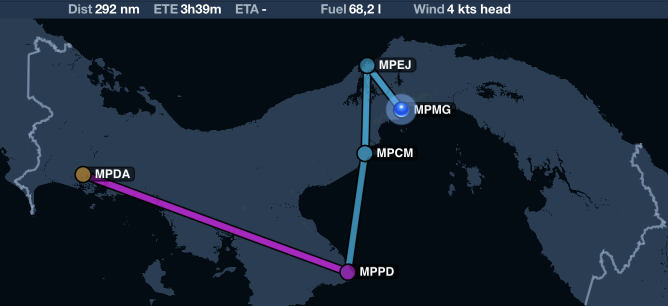
After Guido left on February 15th, I spent a week on my own in Panama, before my family arrived February 22nd. Flew from David (MPDA) via Pedasi (MPPD), Chame (MPCM) and Colon (MPEJ) to Panama City's Marcos Gelabert airport (MPMG)
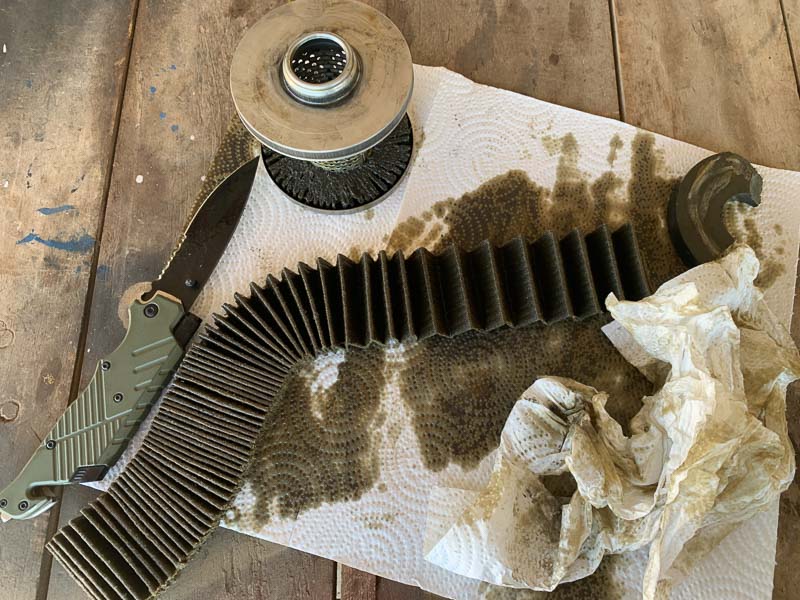
February 15th. After Guido left, we went to Ibu’s hangar. N5581M has flown 46 hours since the annual at Randy’s airport. A good time to change oil, oil filter and air filter. We opened the oil filter and luckily found no large pieces of metal. Healthy engine. Good. I didn’t discover any other issue with the plane. The new encoder Ibu did order from AircraftSpruce for me had not yet arrived, so I got a rental car and drove to the beaches.
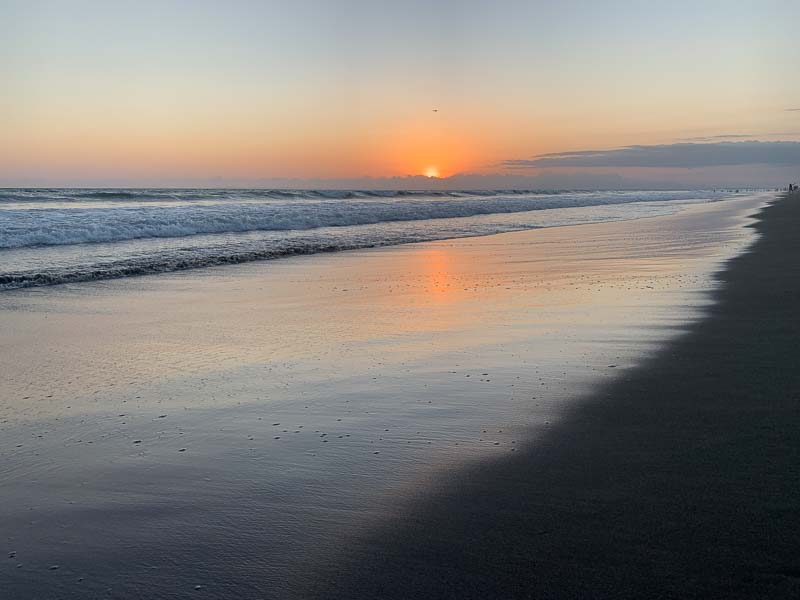
First to Palo Grande, about 20 km southwest of David. Stayed at a nice (and expensive) beachfront hotel. Mostly Panamanians and US citizens. There are not many charter flights to David, the pacific beach locations in the area are not too touristic. In fact, there are not that many hotels and the ones which exist, are small, often categorized as Boutique hotel. The beach itself is similar to Costa Rica, grey sand and a dark grey sea. It doesn’t have the Caribbean appeal.
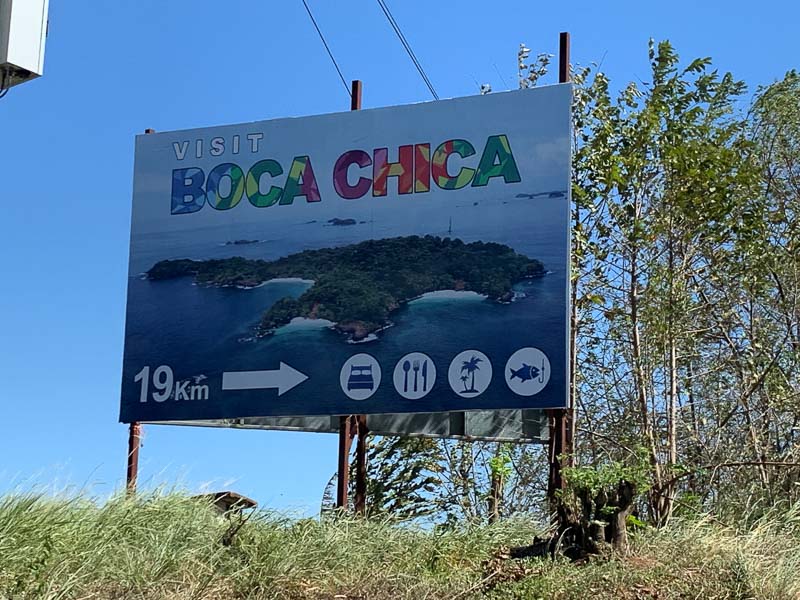
February 16th, I drove to Boca Chica. There is no street along the pacific coast here, so I had to drive back to David and the Panamericana, the highway connecting Alaska with Patagonia (with a little gap, which will play a role in my story later, I believe). 40 km east of David, I left the Panamericana and drove the 20 km to Boca Chica. It is a windy, narrow road, only recently asphalted. Boca Chica is a tiny village, the only supermercadito was closed. My destination was Isla Boca Brava, so I jumped into a water taxi, which abandoned me at a lonely jetty, leading into the jungle.
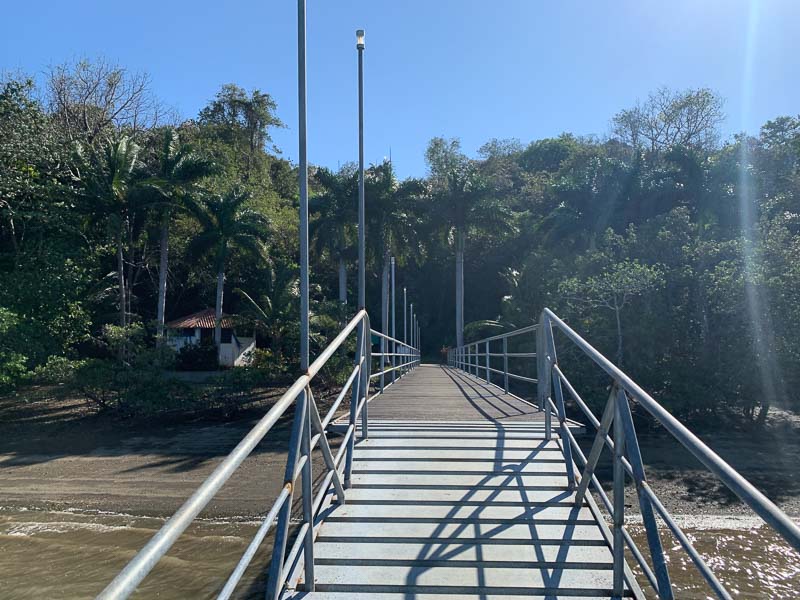
I had booked the place quickly the other day, couldn’t remember what exactly I booked and of course I hadn’t read the reviews. So I was kind of curious. Stairs were steeply going up and then I followed a path through the jungle, until someone barked: If you are looking for a place to stay, you need to talk to me. I had found the owner of my accommodation, a tent in the jungle.
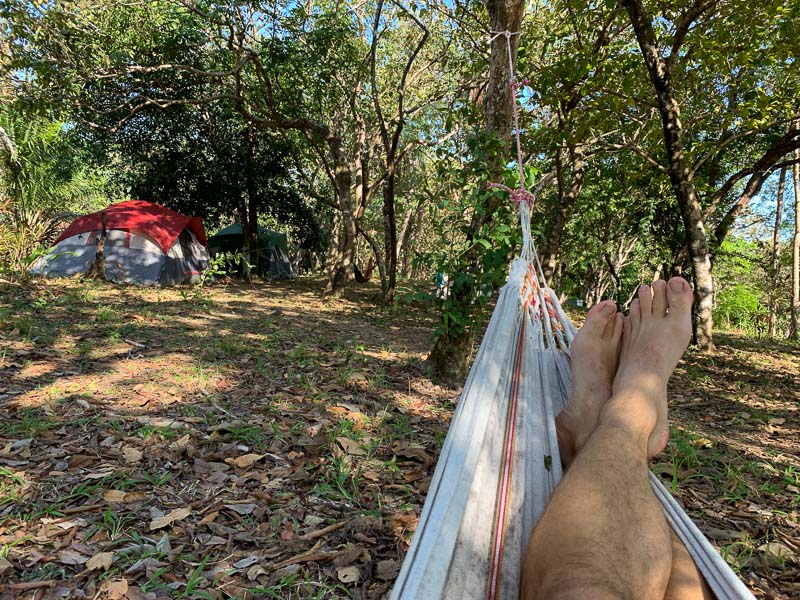
It was lovely. Met nice people there and we talked about the must see places in Panama. A group of monkeys was eating in the trees above us, I went into a hammock and spent my time watching them. It went dark and thousands of stars appeared. Yes, Betelgeuse (Orion’s left shoulder) is not as bright as it used to be. According to the news, it has recently lost two thirds of his brightness. Nobody knows what’s going on up there, 700 light years away.
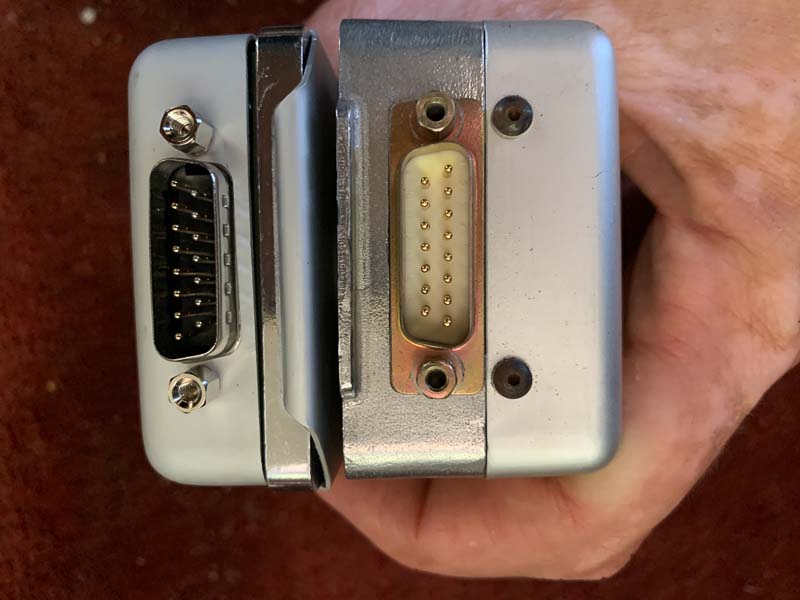
I didn’t bring any food, but I didn’t stay for long either. Just checking out places, I guess. After sleeping well in the tent, I left early next morning, took first the water taxi and then drove back to David airport. Ibu was already waiting for me, he had my new encoder. Picture shows left the new encoder, right the old one.
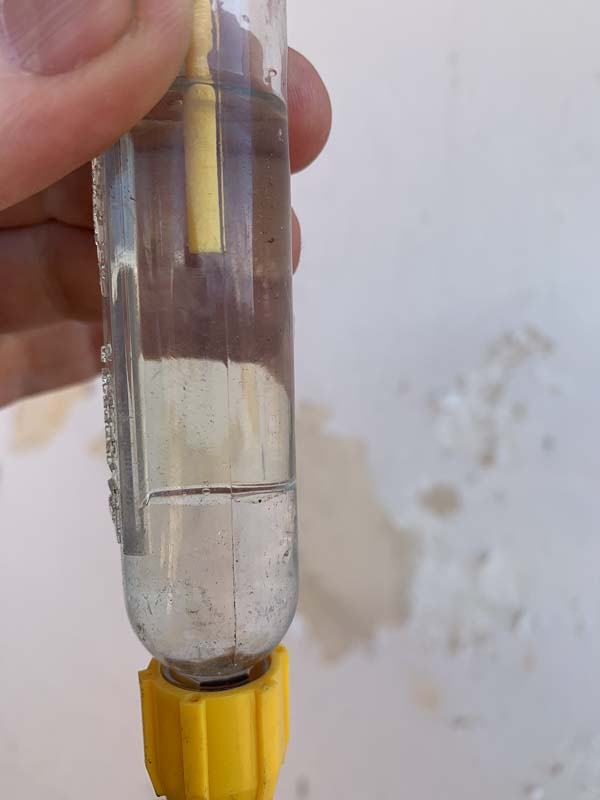
Exchanging old and new encoder was quick, they are compatible. I like that, the old decoder was 31 years old, but mount and connector fit the new one, so the exchange was done in 10 minutes. The transponder showed the accurate altitude, function test ok. The mechanic signed the logbook and we presented it to the inspector who wrote an email to the Aeronautica headquarter in Panama City. But bureaucracy takes time and it wasn’t possible anymore to fly that day. But I prepared everything for the flight, filled the tanks with autogas (95 octan). Picture shows me using my Ethanol tester. The tube is filled up to a line with water, then the autogas is added up to a second line. Then wait 5 minutes. If Ethanol is present, a milky area between the water and the gas appears. Ibu said, there is no Ethanol in Panama's fuel. He was right. No milky area.
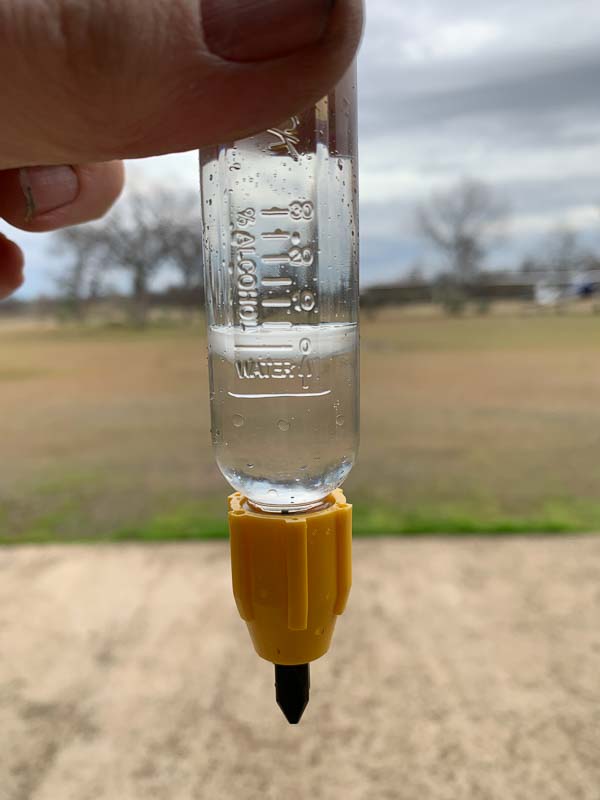
The picture above I took a month ago in California. It is nearly impossible to get autogas without Ethanol in California. See the milky area between the water below and the autogas above? 10 percent Ethanol. It is bad for my engine.
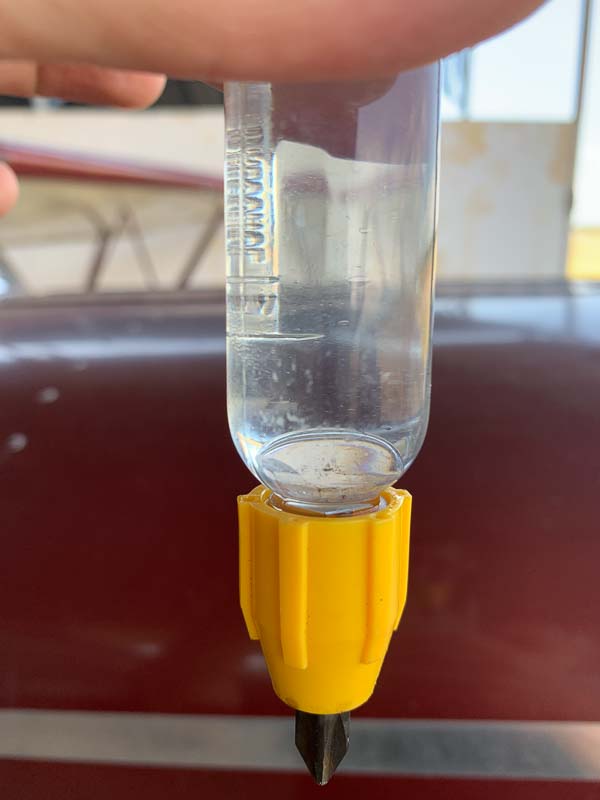
Ibu invited me again to his house to Boquete, but I didn’t want to exhaust his friendship and decided to stay in David. The Granhotel, built in 1945, is a stylish place to stay. It has a large pool and I enjoyed swimming lapses, followed by a good steak, grilled at the poolside barbeque.
Next morning, when I drained like every morning, I found water at the fuel strainer drain. Not much, but it was the first time, I found some. See the small bubble at the bottom of the tube. Always drain your aircraft every morning.
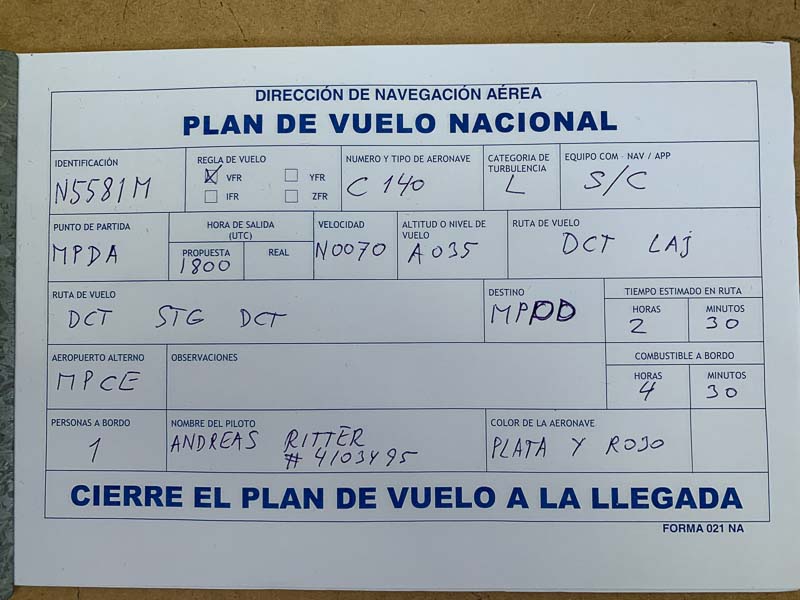
February 18th everything was ready. The requested permit for flights within Panama had arrived. I filed a national flight plan to Pedasi (MPPD), a 2-hour flight. Paid the (low, compared to Costa Rica) airport fee for David and taxied for take off. Winds gusting up 34 knots, the Tower said. All February is like this, they say. The plane took off nearly immediately after I applied full power, bounced back to the runway because it didn’t have flying speed yet and I kept it in ground effect until 80 knots. It was turbulent. And hot. Unfortunately, the oil temperature during climb out reached again red line, the new oil doesn't bring that down. Foreflight had suggested to cruise in 3500 ft to avoid the head wind, but 5500 showed a good ground speed as well and it was a little cooler and nicer to the oil temperature up there.
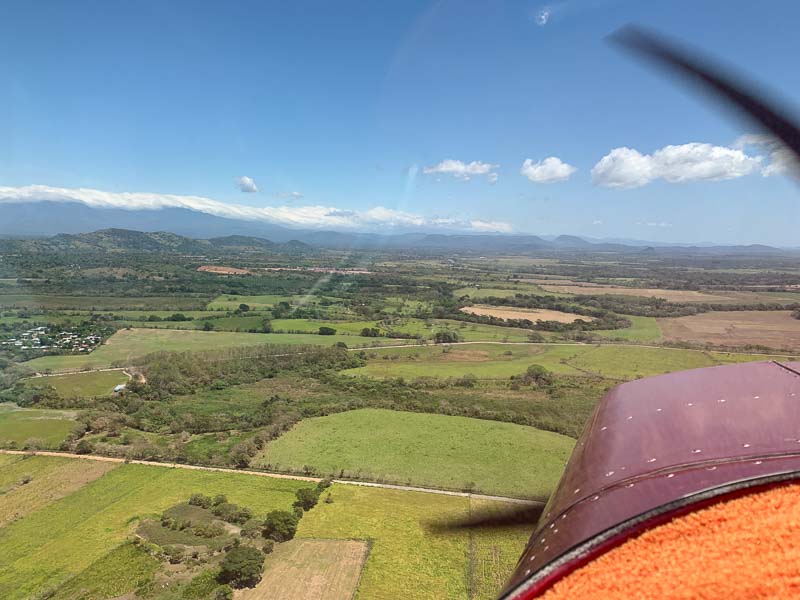
Panama looks nice. Clean fields. Long beaches. But not much wilderness here. Rural, but developed. Many farms. Was handed over from Santiago Radio to Chitre Radio. They gave me winds of the airports I overflew. Nice service!
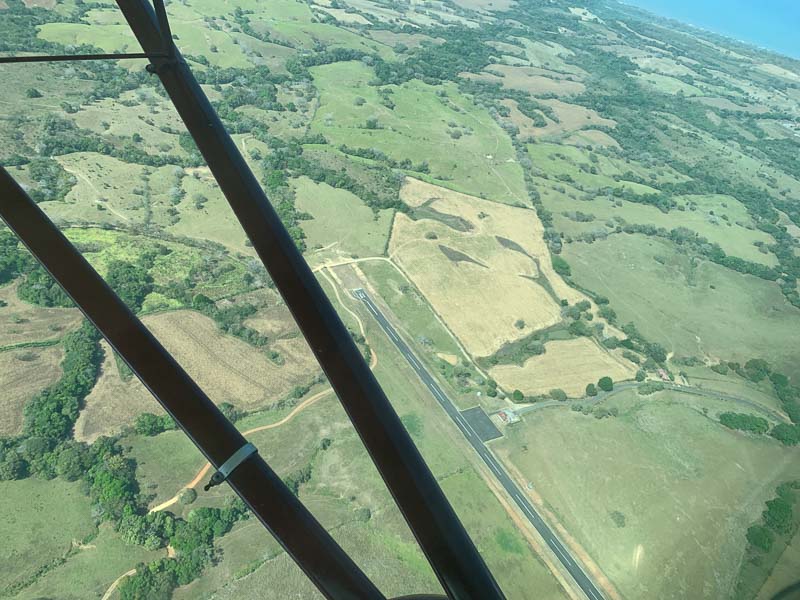
My destination Pedasi is an uncontrolled airport. This was my first flight to an uncontrolled airport since I left the USA and I was curious, what to expect. Chitre Radio gave me two frequencies, the second being the UNICOM frequency 122.8. I couldn’t get a contact on the first, so I switched to UNICOM and stated my intentions. Pedasi has a nice 1000m runway, but only 15m wide. The windsock was easy to see, it indicated at least 20 knots from 1 o clock.
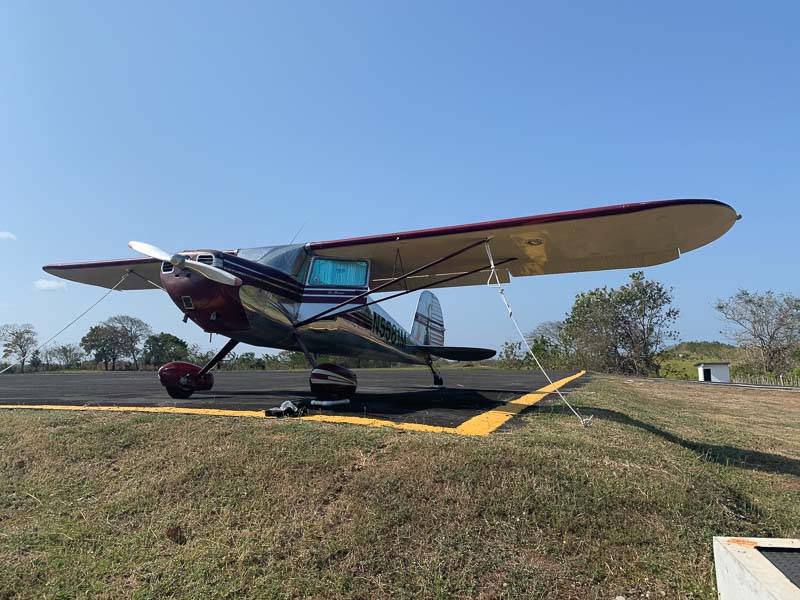
I didn’t find any anchors on the plataforma (= apron) and parking in the grass was not possible, but I parked at the edge of the concrete so that I could place the nails in the soft shoulders. Yes, I am concerned that the wind could flip over my plane, it is a taildragger, don’t forget it, the wing is angled and allows the wind to attack.
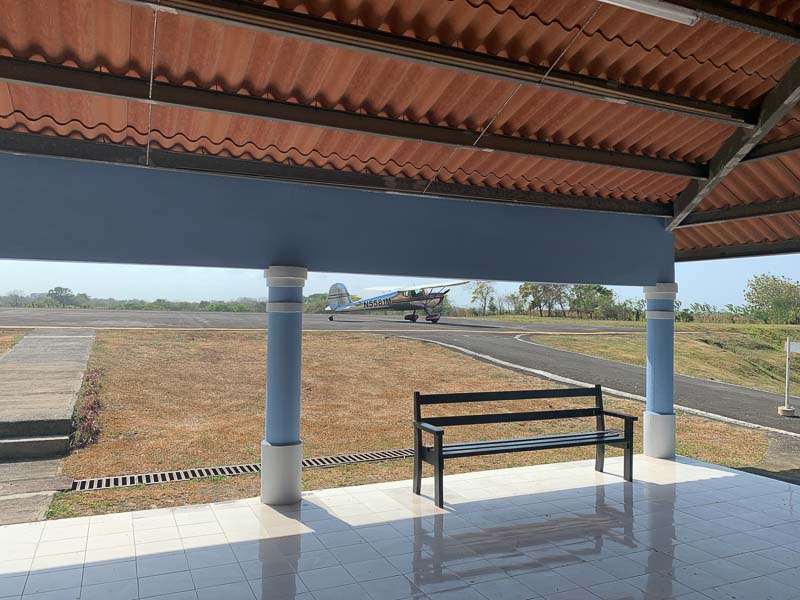
3 workers were present. They asked me, if I had listened to the ATIS. ATIS? Here? I hadn’t. They are installing a new radio, they said. Besides them, nobody is here. And no other plane. There are no hangars here, just something looking like a bus terminal in a small village. Some benches, made for passengers waiting for a little commuter plane to pick them up and fly them to Panama City. Security is just a sign, there is no real fence. Is it safe to park the plane here? Risks are wind and bad guys likewise. I don’t leave valuables in the plane, but the plane itself could be vandalized. I am not really concerned, just a little bit. My bigger concern is the wind. It is blowing all night long. Will the nails hold? What if they are pulled out by the wind and my plane begins to move and hits something? I decide to spend the night at the airport, close to the plane. But first I walked into Pedasi, a lovely small village with many american tourists, some of them surfers. Went to the beach, but again grey sand and grey water, no caribean fealing.
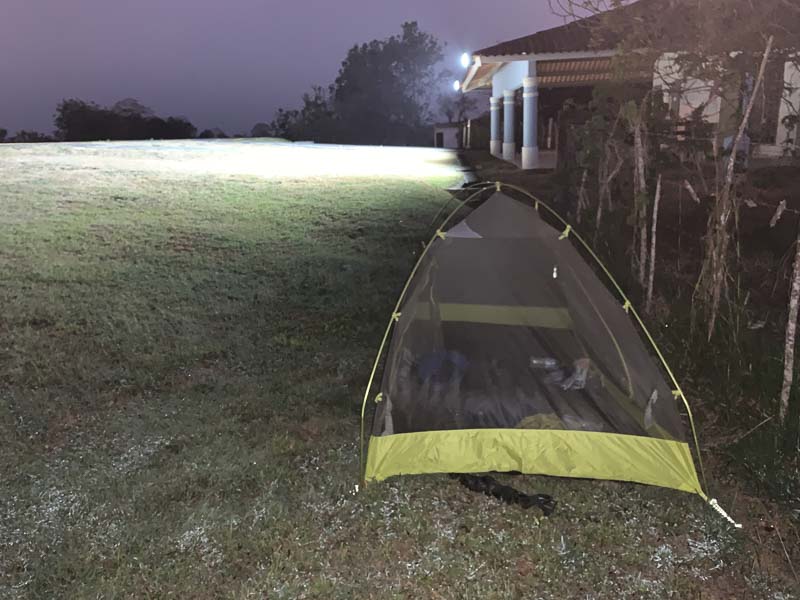
It is warm and dry and I have seen enough hotels. I like camping and I am concerned about my plane, so I walked back to the airfield. Nobody was there. A quite place at night.
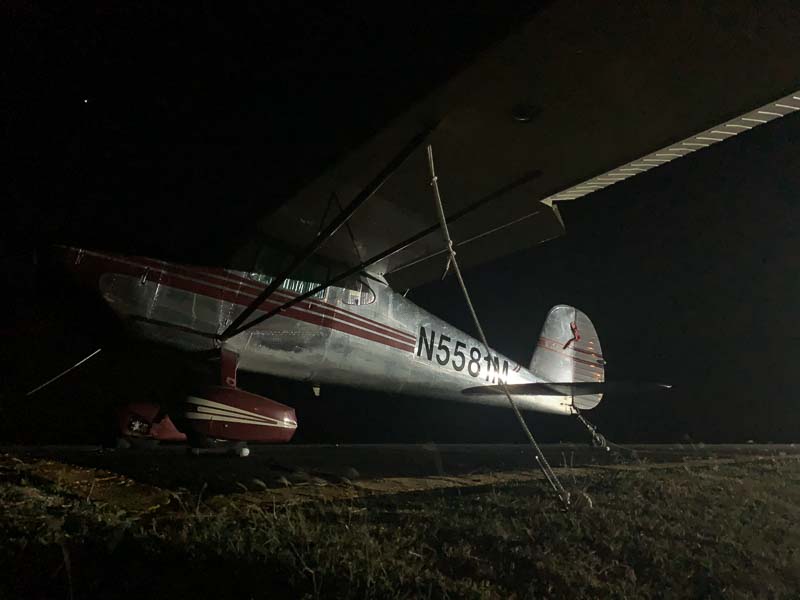
I camped just 8m away from my aircraft. Not hidden, in plain view of everybody who comes to the airport in the night. Didn’t ask anybody and calculated the risk that somebody wakes me up in the night, telling me I am not allowed to camp here. Well, nobody came. I slept well and woke up at 5:30. Sun rose at 6:36. Filed my first flight plan over the phone ever, as filing via Foreflight doesn’t work. Was easy. My Spanish is sufficient for doing this, but they also understand English.
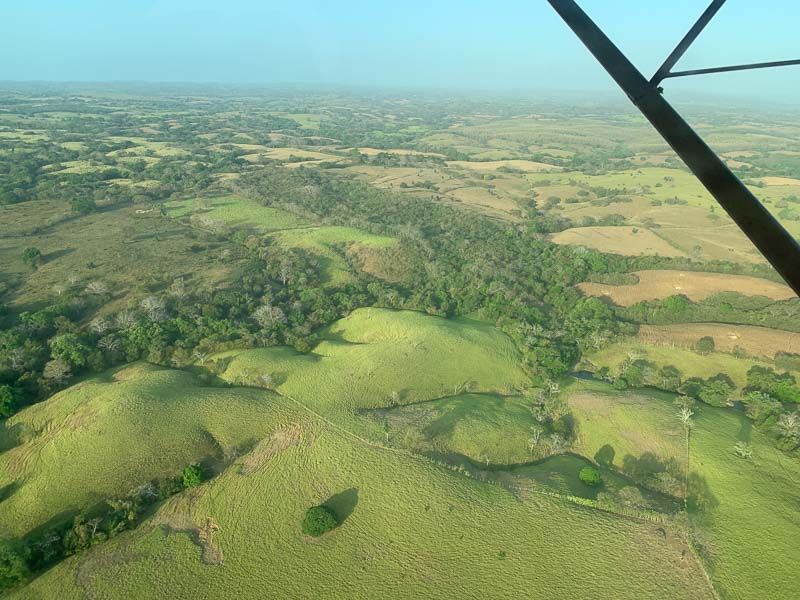
After takeoff in a beautiful morning light, I opened my flight plan with Chitre Radio. Didn’t work. I initially thought they don’t understand my radio transmission, as I was still low, but then a local VFR flight helped with a relay and I understood that the lady at the radio had difficulties communicating with me in English. She sent me to Panama Radio and Panama Radio, after checking that I am still south of Chitre, sent me back to Chitre Radio and she sent me back to Panama. It was funny.
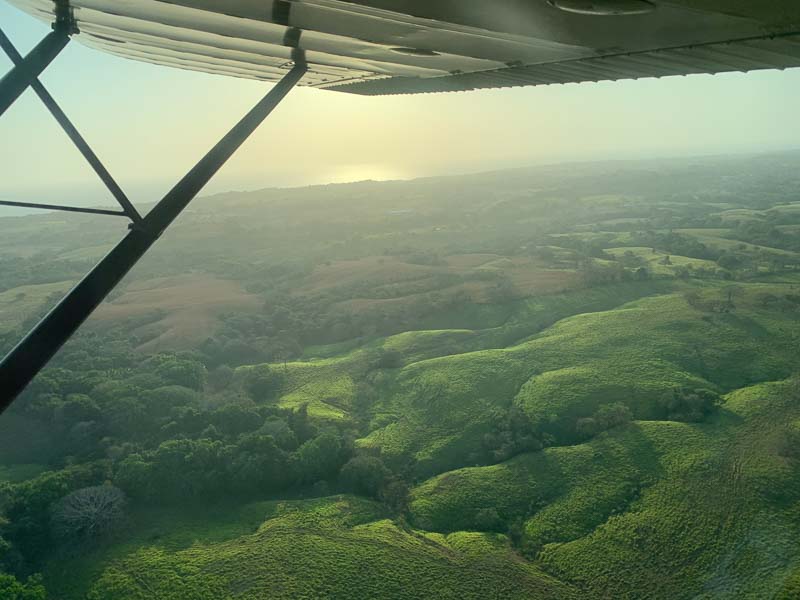
I didn’t fly direct to Chame (MPCM), but along the coast, as I still don’t carry a life jacket. Have to get one, they are not expensive or heavy, just bulky. Idea is always to be able to land on the beach. One day, I want to do it, but please not in an emergency!
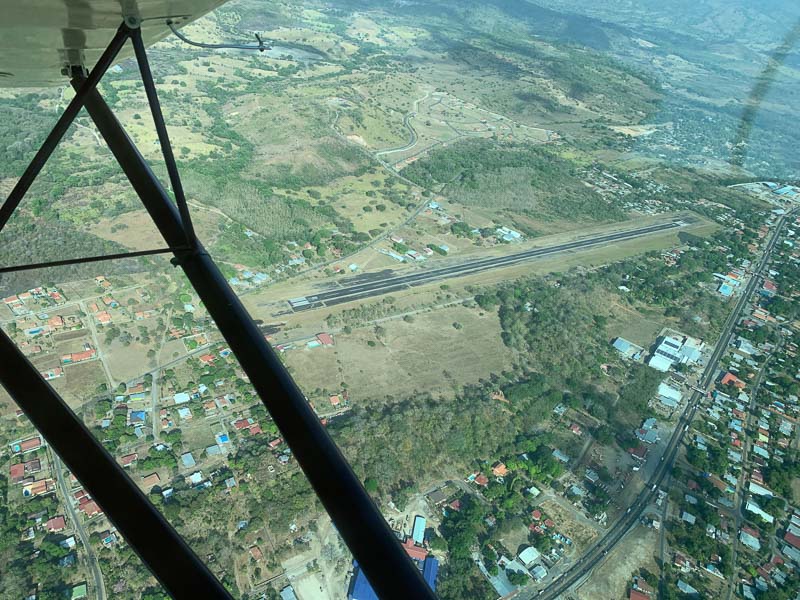
Chame is again uncontrolled, but meanwhile I am used to it. As in Pedasi, there was no other traffic, but I dutyfully stated all my positions. Wind was – of course – again blowing from the north. Easy to chose the correct runway. After landing, dogs barked and alarmed two military guys, guarding the airfield. Good, this airport is guarded. Hammering the nails into the ground was no problem here, no concrete, just gravel and grass on the plataforma. The right place for a 140, Guido remarked correctly.
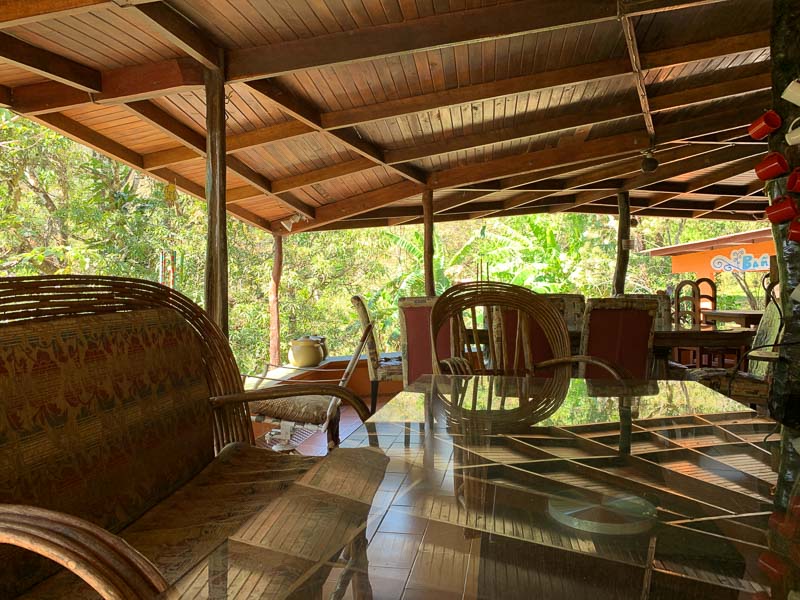
The guards called a taxi for me and that drove me to a lodge mentioned by the people I met on Isla Boca Brava. It was a 45 minute drive, but I think Chame is the closest airport to this lodge. There are very few landing strips in the mountains. It is called the Mamallena Eco Lodge, close to Valle, at an elevation of about 700m. It is in the forest at a small creek. Run by a young couple; she is from Venezuela, he is from Texas. “Eco” stands for “ecological”, not for “economical”, but I slept in the dorm for 13$, my cheapest stay so far on the whole trip. Food was excellent and the stars bright and fantastic to watch (no moon). Very friendly couple, I decided to return and booked it for my family.
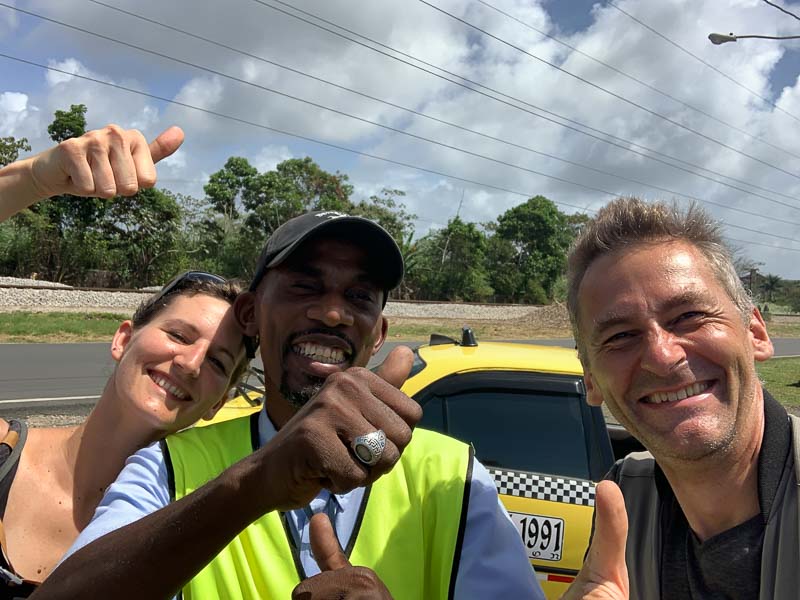
Next morning, I took the collectivo back to the Pan American highway and then a taxi to Chame airport. Much cheaper that way. Met a woman in the lodge and took her as a passenger for the next two flights. We first flew to Colon (MPEJ), the caribean entry port of the canal. Clouds were low, but terrain was low too. Farther west (north of David), the mountains have been embedded in clouds, most of the time I was here. It would have been difficult to fly VFR to the caribean side, but here, close to the canal, it was possible. Had to fly below 2500 ft, though. Colon is a controlled airport with a terminal adequate for handling aircraft up to A320, I guess, but I haven’t seen any charter or line flights. It was just us and a flight school aircraft. Wind was only 14 knots. No, we don’t have fuel here, the tower said. Well, I took one of my jerrycans and asked a taxidriver what he will charge, if he drives us to a) a gas station, b) a place to have lunch, c) the canal and d) back to the airport. After we agreed on a price we did all this in just over an hour, refueled the plane, paid the airport fee (Colon is like David a private airport and they charge a landing fee) and took off for Panama City.
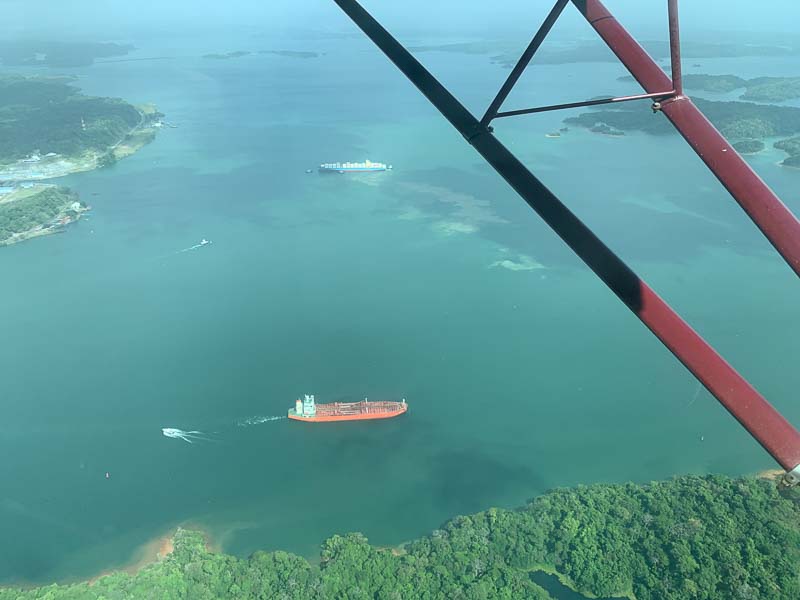
Just in time. Heavy rain hit the field. Marginal VFR. Had to stay below 2000 ft initially. How high is that caribean canal bridge shaped like the Golden Gate? We followed the canal. Below us, big container ships and even a Cruise ship. First over Gatun Lake, the artificial lake which forms about half of the whole canal, then following the canal.
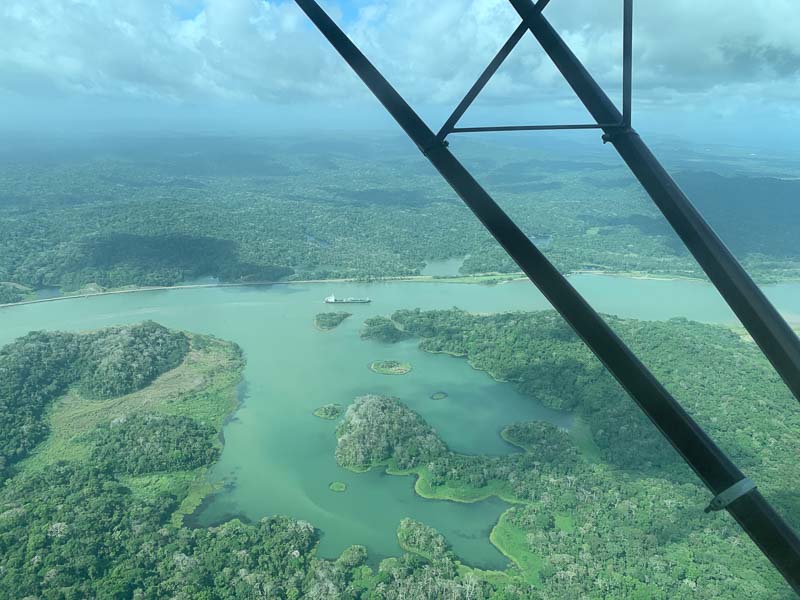
Jungle below us. And the canal.
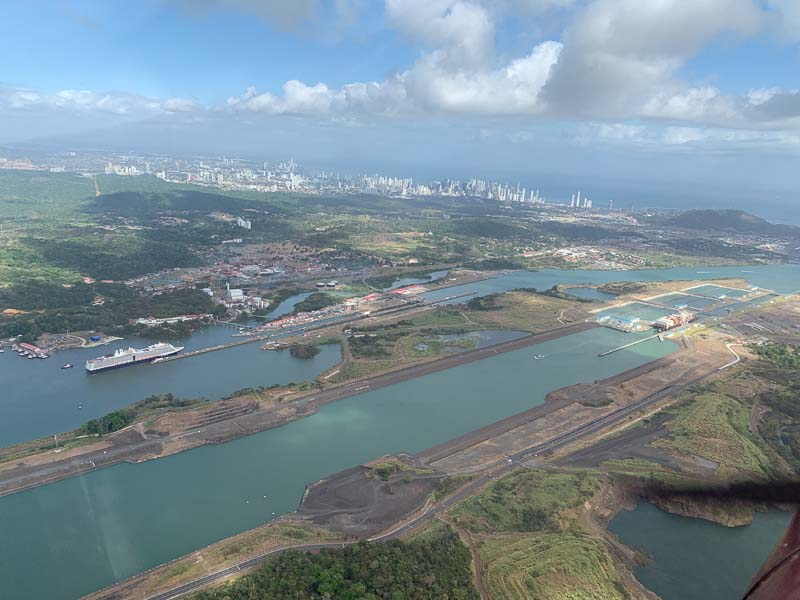
Panama City came into sight. Many skyscrapers. Do you have the field in sight, asked Flight Following. I saw it, just east of the canal and before that mountain. Over to Tower, which cleared us to land. Nice approach to runway 1. Albrook field was built by the US in the 1920s and 30s, to protect the pacific entry of the Canal. After Pearl Harbour, activity increased sharply, Wikipedia says. They probably feared a Japanese invasion. Now it serves mostly inner-Panamanian line flights (many Fokker 50s) – and General Aviation.
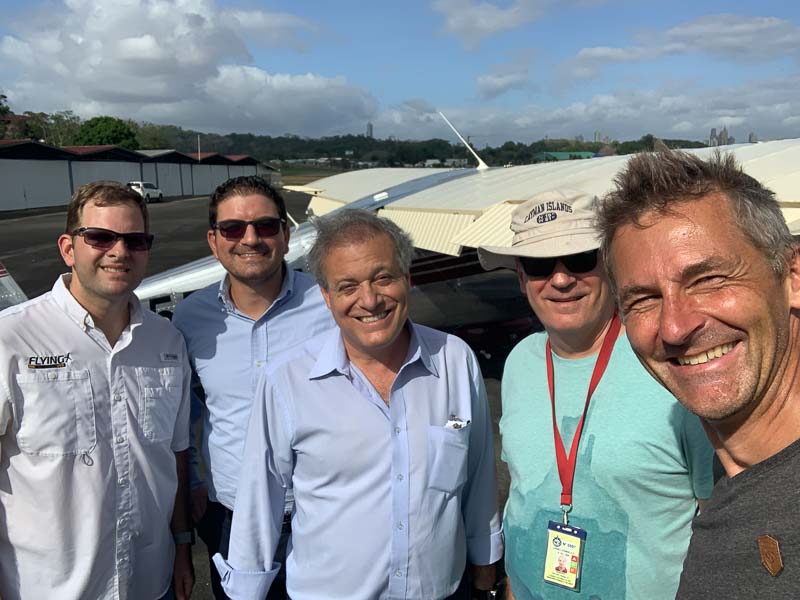
Taxi to the AeroClub, Ibu had said. There, Alejandro, Gustavo, Robert and Jaime from the Asociacion Panamena de Aviacion already waited for me.
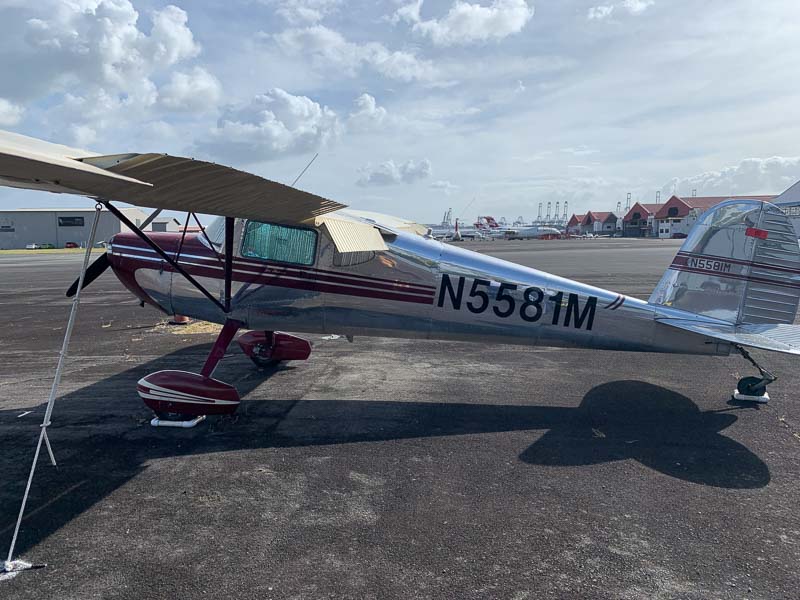
We enjoyed an hour in the club lounge together. Then Gustavo drove me to a nice hotel (Albrook Inn).